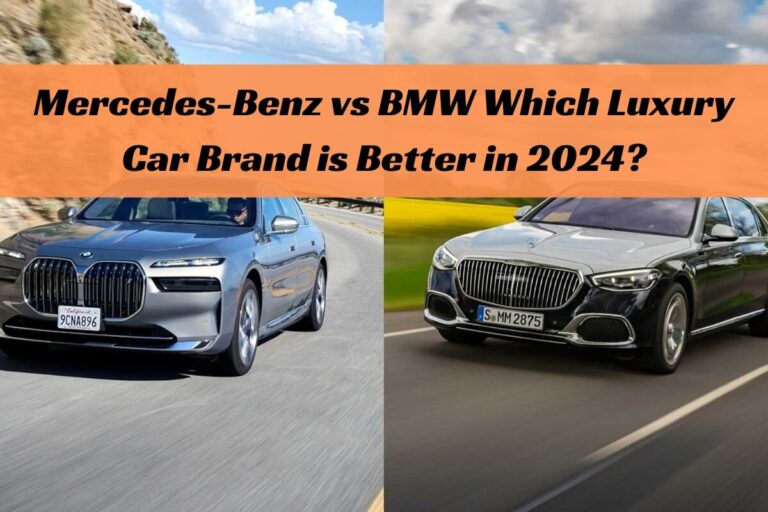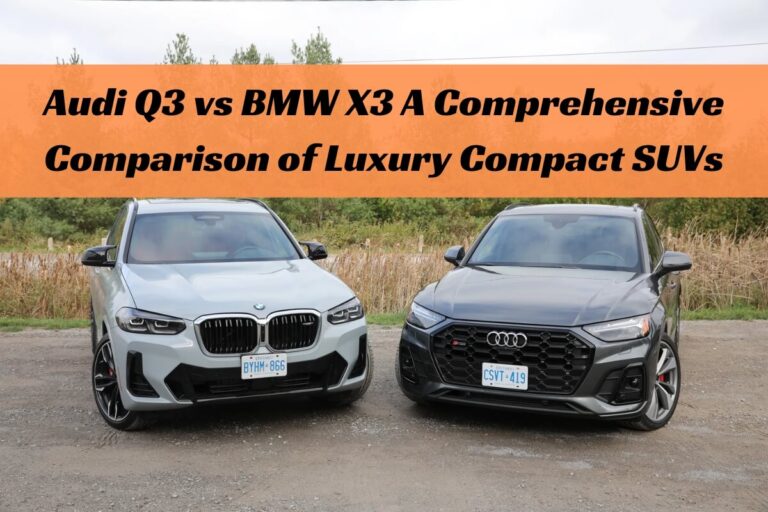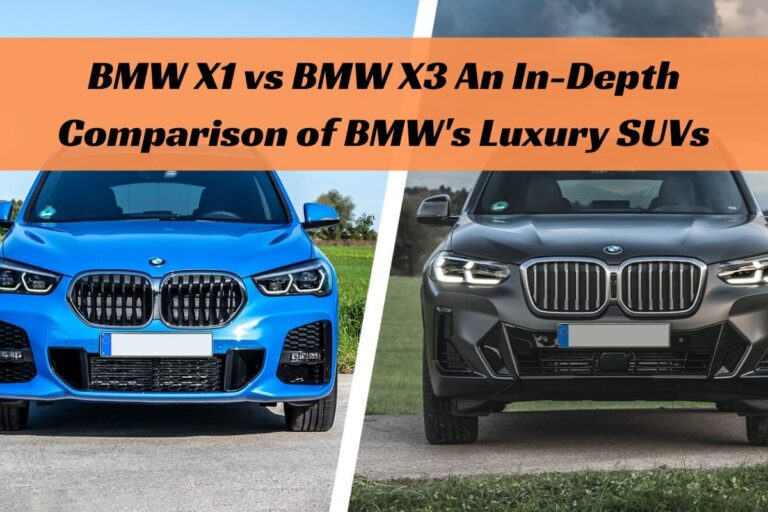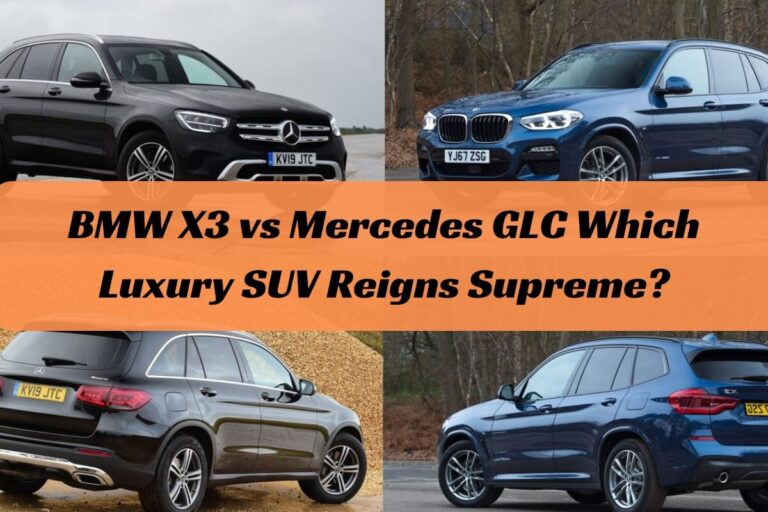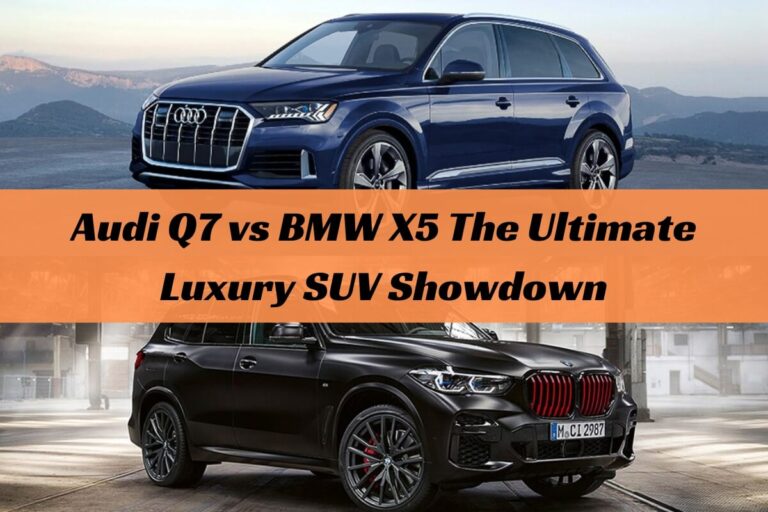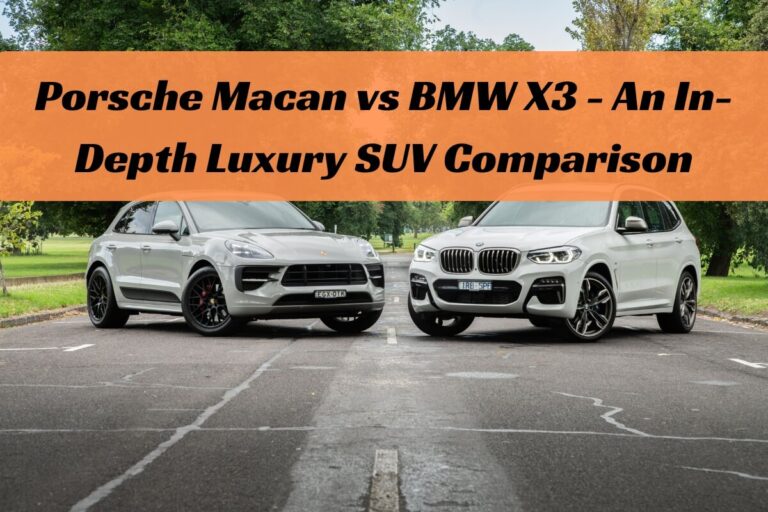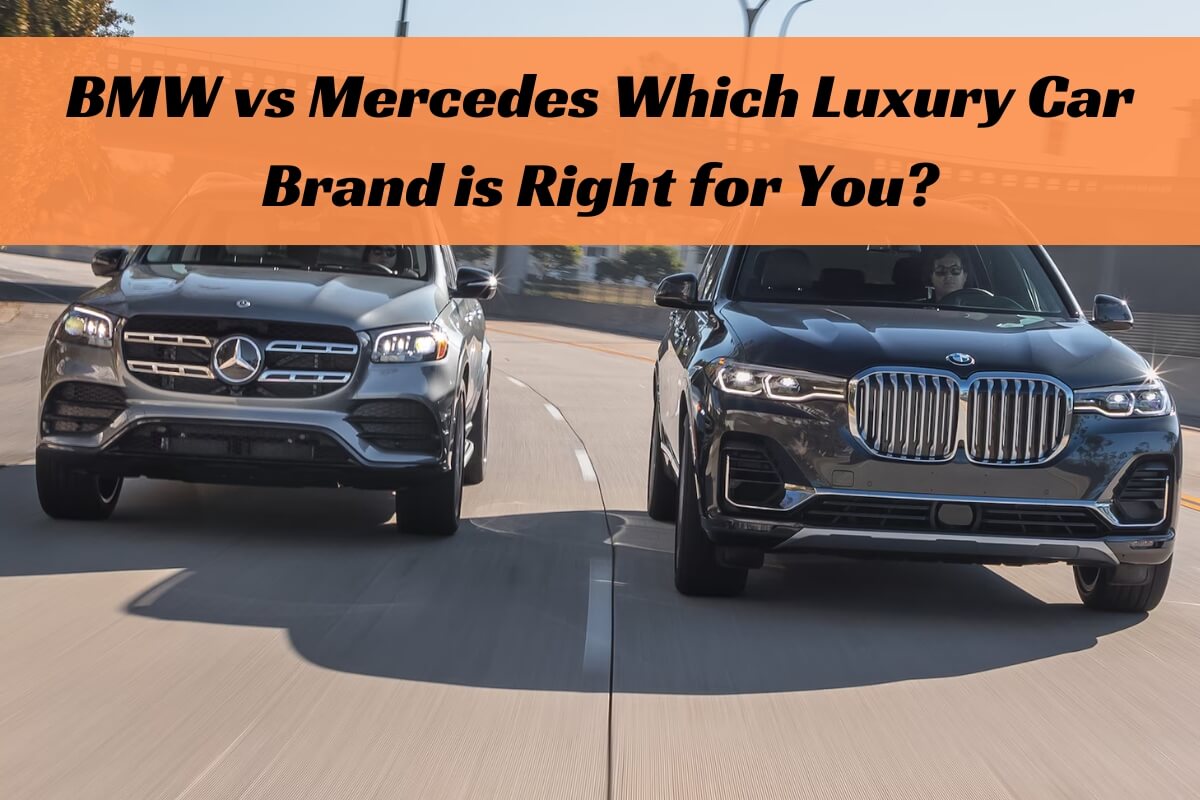
For decades, BMW and Mercedes-Benz have been locked in an epic battle for luxury car supremacy. These two German automakers have long represented the pinnacle of driving excellence, pushing each other to new heights of performance, technology, and craftsmanship.
But which of these automotive giants deserves the crown? Which brand builds the luxury vehicles best suited for your lifestyle and preferences?
While both BMW and Mercedes offer exceptional luxury and performance, BMW tends to cater more to driving enthusiasts who prioritize sporty dynamics. In contrast, Mercedes leans into a more refined, comfort-oriented luxury experience.
To decide which is the better fit, this guide will take a deep dive into all the key factors, including:
- Distinct brand philosophies and their impact on vehicle design
- Performance capabilities from straight-line speed to handling prowess
- Each brand’s approach to cutting-edge tech, convenience features, and interior opulence
- How the two compare when it comes to practicality with SUVs and electric vehicles
- The all-important costs of buying, maintaining, and owning these luxury cars long-term
- Reliability ratings and common issues owners face with each make
- Overall popularity and latest sales trends to understand market perceptions
Whether you’re a performance junkie, tech enthusiast, or just someone who appreciates the finer things, this guide will illuminate the pros and cons of BMW versus Mercedes. Let’s dive into the details of this long-standing luxury rivalry.
A Tale of Two Automotive Giants
While both brands are German juggernauts today, their origins stem from quite different beginnings. BMW started out in 1916 as a World War I manufacturer of aircraft engines before eventually shifting into motorcycles and automobiles. The first BMW car didn’t arrive until 1928.
In contrast, Mercedes-Benz was formed in 1926 from the merger of two well-established automakers – Daimler and Benz, which had been building cars since the late 19th century inventions of Karl Benz and Gottlieb Daimler. As such, Mercedes came into existence as an actual car company.
Over the decades, these two brands diverged in their overarching philosophies. BMW positioned themselves as creators of “the ultimate driving machines,” with a laser focus on delivering superior performance and handling dynamics. Mercedes instead anchored their brand in peerless luxury and comfort, building “the best or nothing.”
These distinctly different priorities – razor-sharp sportiness versus opulent refinement – have manifested themselves throughout both companies’ lineups and design languages. And it’s what separates the core appeal of each brand to this day.
Battle of Design and Style
When it comes to exterior styling, Mercedes has traditionally featured sleek, elegant lines and classical proportions that convey timeless luxury. Their designs emphasize smooth, flowing curves and an overall sense of sophistication. The iconic Mercedes grill has remained a staple of the brand’s identity.
BMW, on the other hand, tends towards a more aggressive, sporty, and overtly masculine design language. BMW styling is defined by muscularity, crisp angles, short overhangs and wide stances that exude dynamic performance and athleticism. The signature kidney grille and Hofmeister kink window frames are distinctive BMW styling cues.
These exterior design philosophies extend into each brand’s vehicle interiors as well. Mercedes cabins are sumptuously appointed spaces that prioritize lavish materials, intricate craftsman detailing, and serene comfort over all else. The end result is cocoon-like luxury not entirely dissimilar from a private jet or ultra-premium hotel suite.
BMW interiors, while still undeniably premium, take on a more overtly driver-focused orientation. The layout, control placements, and seat designs cater to enthusiastic piloting with clear sightlines and ergonomics built around spirited motoring. Luxury is present, but balanced against racy sportiness.
Performance and Driving Dynamics
If outright performance and agility are priorities, BMW tends to have the advantage. BMWs are widely regarded as being among the most dynamically capable and rewarding enthusiast cars in the luxury space.
BMW’s legendary precision engineering imbues their vehicles with sublime steering feel, tenacious grip, beautifully neutral handling balance, and an utterly composed ride even when being driven hard. BMWs simply feel more tightly tied down and eager to tackle a twisty road.
Power delivery from BMW’s turbo engines is also incredibly linear and responsive compared to many rivals. Overall, BMW prioritizes communication and driver engagement above all else.
That said, Mercedes is no performance slouch in its own right. Mercedes vehicles deliver brutally quick acceleration thanks to their range of potent turbo engines. The AMG sub-brand, in particular, has rolled out some truly monstrous performers like the 630 hp E63 S.
Where Mercedes separates itself is in how that performance is delivered. Rather than the hyper-focused driving experience of BMW, Mercedes takes a more cultured approach thatblends serious capability with sophisticated refinement.
Acceleration is savagely quick, but the Mercedes maintains an overall sense of sublime smoothness and isolated comfort. The steering and suspension simply insulate occupants more from the harshness of the road. It’s a balance of serious performance with cloudlike luxury.
Tech, Features and Luxury Amenities
Both brands are at the cutting edge of car technology and conveniences. BMW’s iDrive system is one of the slickest infotainment interfaces on the market, blending modern styling and smartphone-like usability. It controls a vast array of features, including advanced driver aids.
Not to be outdone, Mercedes’ MBUX interface is just as impressive with its crisp graphics, voice control capability, and augmented reality features that can even overlay navigation instructions over a live video feed.
Beyond infotainment, both brands are replete with active safety tech like automatic emergency braking, lane keeping assist, adaptive cruise control, and more. At the highest trim levels, you’ll find indulgences like massaging seats, premium Burmester audio systems, fragrance dispensers, and virtually every comfort conceivable.
If there’s one area Mercedes may have a tech edge, it could be with the brand’s semi-autonomous driving capabilities like the latest Drive Pilot system. Overall though, cross-shopping buyers will find both brands extremely competitive on the technology and luxury amenity front.
What About Practicality? Comparing SUVs and Electric Vehicles
While sedans, coupes and convertibles are the historical forte for these brands, Mercedes and BMW have both pivoted aggressively into the rapidly growing SUV and electric vehicle segments in recent years.
On the SUV front, the BMW X5 and Mercedes GLE-Class are their respective mid-size luxury SUV offerings packed with many of the same performance and tech highlights as their sedan counterparts. Both deliver a nice balance of interior roominess, towing capabilities, and off-road chops despite their on-road performance leanings.
When it comes to full electrification, the cutting-edge lies with the forthcoming BMW iX and Mercedes EQS models. With stunning range estimates exceeding 300 miles and futuristic exterior designs, these EVs could give even Teslas a run for their money.
But beyond these flagship electric efforts, both lineups now offer more mainstream plug-in hybrid variants as well spanning SUVs, sedans, and even high-performance models like the BMW X5 45e and Mercedes AMG 53 series.
The Cost of Luxury: Pricing, Maintenance and Ownership Costs
Let’s address the elephant in the room: luxury cars from automakers like BMW and Mercedes do not come cheap, whether you’re looking at purchasing prices or long-term operating costs.
On the new car front, BMW tends to have a slight pricing advantage at the lower end of its lineup, with the 3 Series sedan, for instance, ringing in a few thousand less than a Mercedes C-Class. However, as you move up the trim levels, pricing between the two brands tends to equalize and even flip, with upper-echelon Bimmers like the 8 Series costing more than a Mercedes S-Class flagship.
When it comes to maintenance and repair costs, things tilt slightly in favor of Mercedes. Data from YouGov polls and other sources suggest Mercedes tends to be a bit more affordable in terms of both labor and parts pricing for routine services or bigger repair bills.
Extended warranty costs from each brand can help buffer these expenses. But in general, Mercedes seems to hold a bit of a long-term cost-of-ownership advantage versus BMW. Additionally, Mercedes vehicles tend to retain their residual value a bit better based on data from sources like Edmunds.
Finally, while it can vary by specific model, Mercedes cars tend to carry higher insurance premiums on average versus BMWs. This is potentially due to Mercedes having a reputation for higher repair costs when accidents do occur. Of course, individual policy rates can be impacted by your location, driving record, mileage, and other personal factors.
Reliability Ratings: How Do They Stack Up?
When it comes to predicted reliability ratings, neither Mercedes-Benz nor BMW finishes at the top of the pack among luxury brands based on data from sources like J.D. Power and Consumer Reports. However, Mercedes does tend to rate a bit better than BMW.
In J.D. Power’s 2022 Vehicle Dependability Study examining problems per 100 vehicles in the first three years of ownership, Mercedes scored a respectable 16 problems better than the industry average. BMW, on the other hand, fell behind at 19 problems worse than average.
Consumer Reports’ reliability surveys sampling its members tell a similar story. In their 2022 Brand Report Card, Mercedes earned a relatively middle-of-the-road score of 3 out of 5. BMW fared worse at just 2 out of 5 in terms of predicted reliability.
Common issues cited for Mercedes include troubles with the MBUX infotainment system, excessive brake wear, squeaks and rattles in the cabin. For BMW, transmission issues, fuel injection problems, and electrical glitches seem to be among the top complaints.
Of course, no car is perfect and issues can arise, especially when you factor in the added complexity of performance technologies and over-the-air update capabilities in modern luxury cars. But Mercedes models have at least demonstrated a very slight upper hand in terms of anticipated dependability.
BMW vs Mercedes: Which is More Popular and Why?
Looking at the latest sales numbers can provide some insight into the overall brand perceptions and popularity of BMW versus Mercedes in the current marketplace. And the data shows BMW with a clear lead in terms of new vehicle sales globally and in key markets like the U.S. and China.
In 2022, BMW sold around 2.4 million vehicles worldwide compared to about 2.05 million for Mercedes. BMW’s lead was even more pronounced here in the U.S., outselling Mercedes by over 100,000 vehicles.
There could be a few factors at play driving BMW’s higher overall sales volumes. The brand’s reputation among younger generations as delivering a more engaging, “fun-to-drive” product could be resonating with buyers. BMW also prices their entry-level vehicles like the 3 Series a bit more affordably than Mercedes C-Class competitors.
Additionally, some car buying experts suggest Mercedes has pivoted more upmarket and luxury-focused in recent years. This could have priced out some more budget-conscious consumers seeking affordable luxury vehicles.
In summary, while these two brands battle ferociously for sales dominance in major regions, BMW’s combination of respected performance, fresh product lineups, and competitive pricing seems to be giving them a slight edge in the popular vote as of late.
In Conclusion
Between BMW and Mercedes-Benz, there is no definitively “better” brand for every buyer. Each has carved out a distinct luxury vehicle character that will resonate differently depending on personal priorities and preferences.
If exhilarating dynamics, agility, and an untamed driving experience are paramount, then BMW’s performance pedigree and road-carving capabilities make it an obvious choice. The brand’s relatively lower upfront pricing also makes for a more accessible entry point into luxury.
However, if your definition of automotive indulgence skews more towards serene comfort, coddling refinement and Old World opulence, then the Mercedes lineup is tailored to deliver on those fronts. With a pricing advantage at higher luxury tiers, Mercedes is also worth considering for buyers of ultra-premium flagships.
Additionally, the slightly higher long-term reliability ratings and lower maintenance costs could make a Mercedes the smarter choice from a sensible ownership perspective.
Ultimately, both of these German marques represent automotive royalty, with a level of brand cachet, performance, technology and luxury that separates them from the rest. Decide which flavor best suits your personal taste and driving style.

